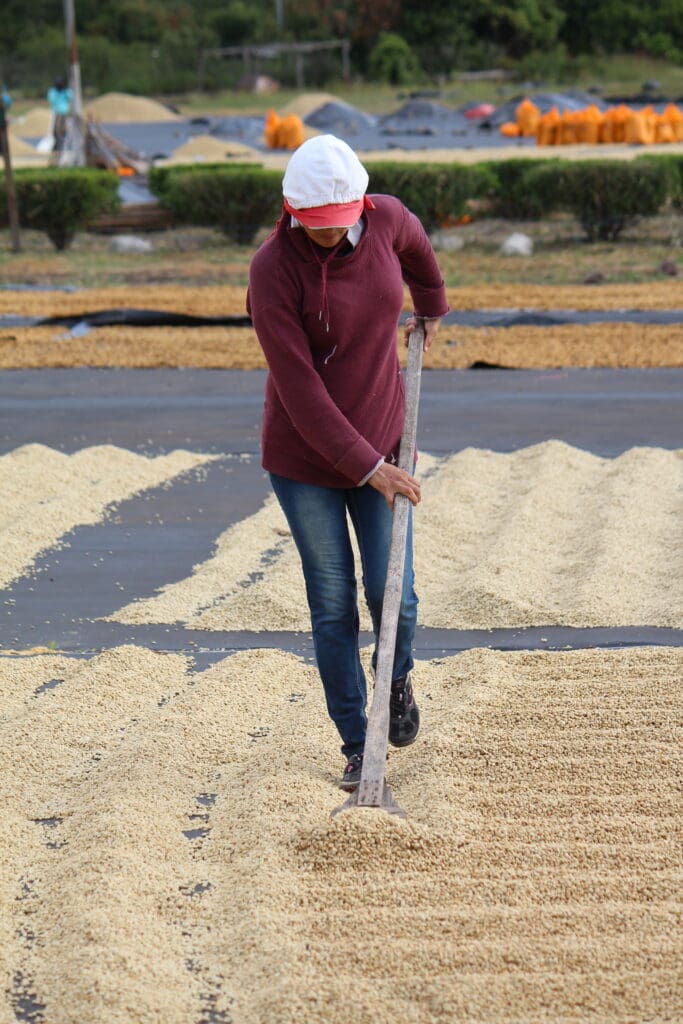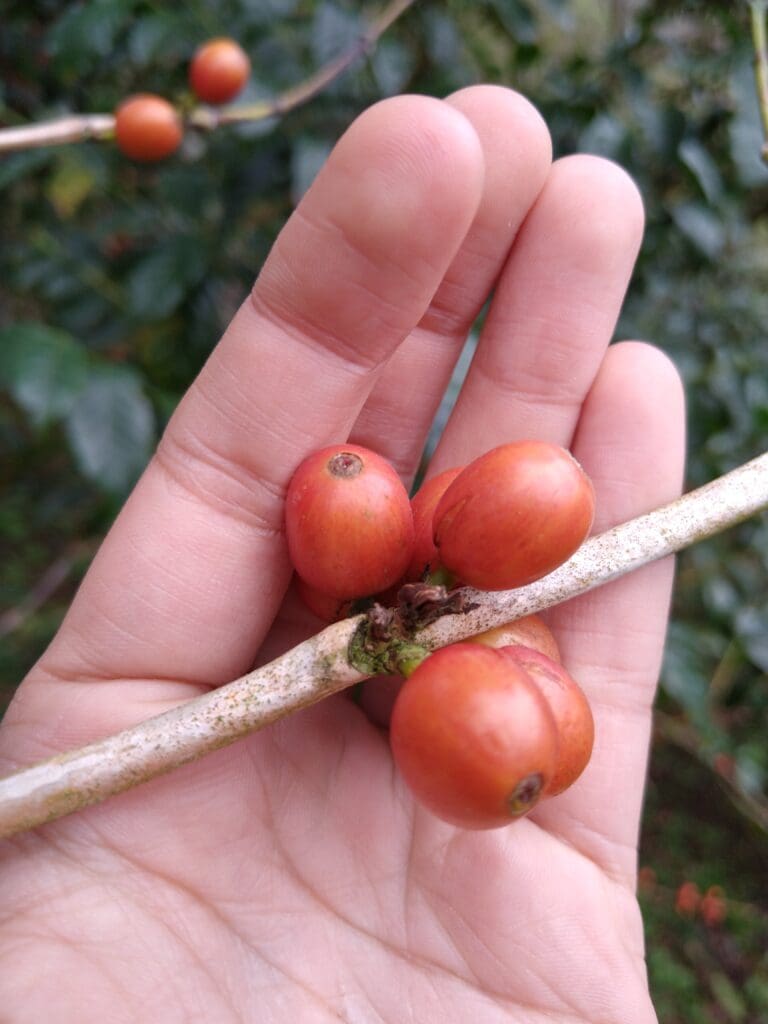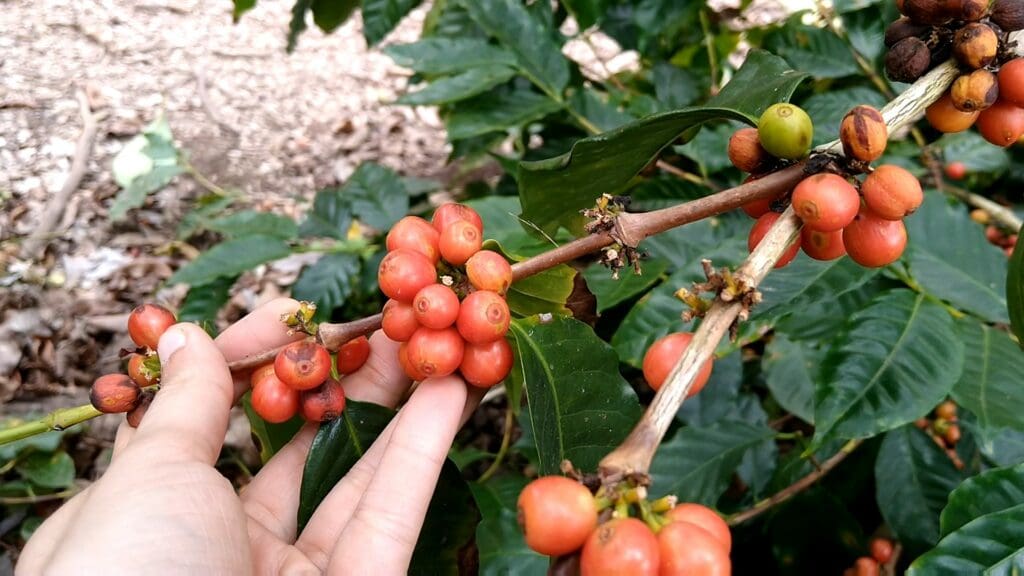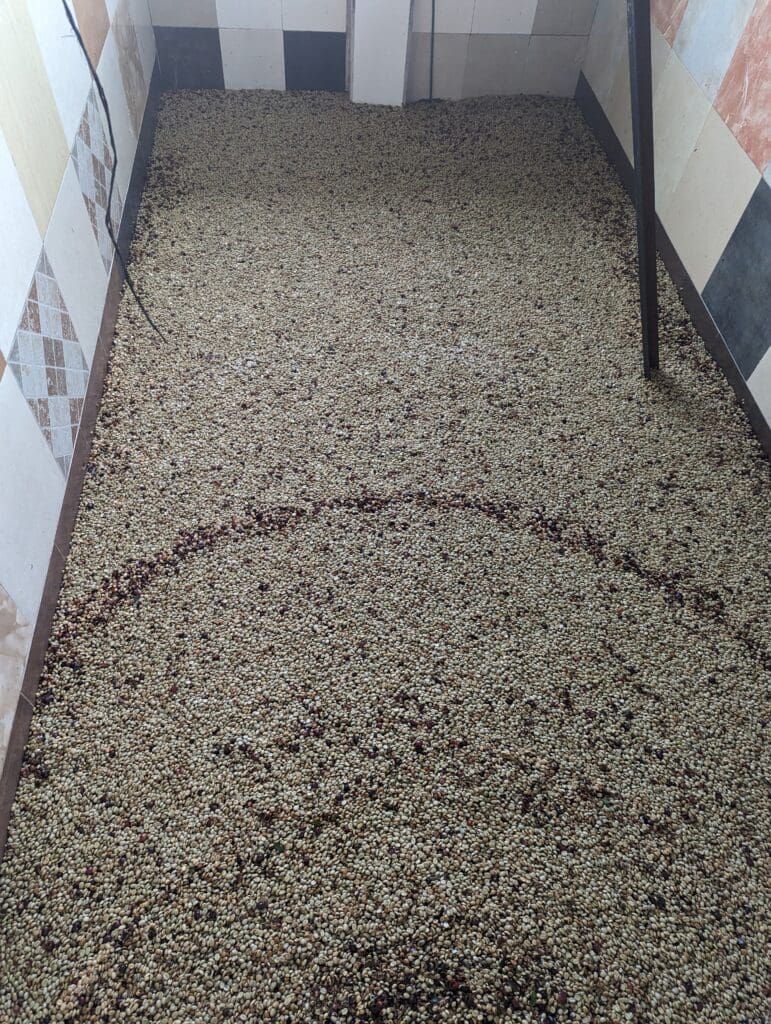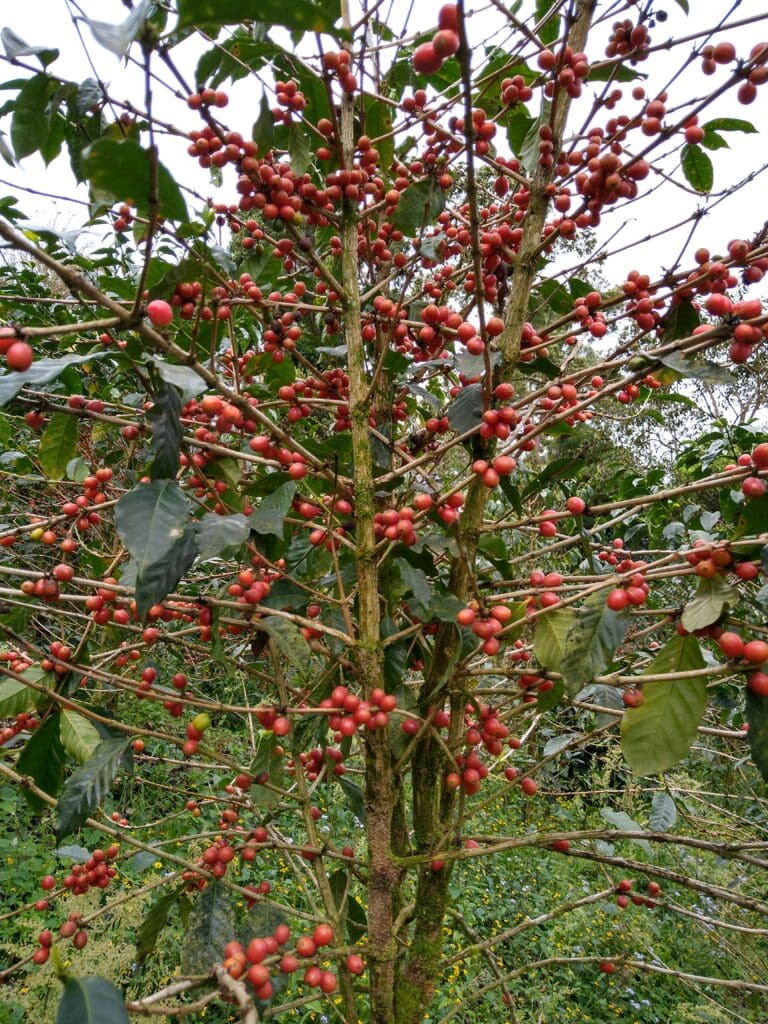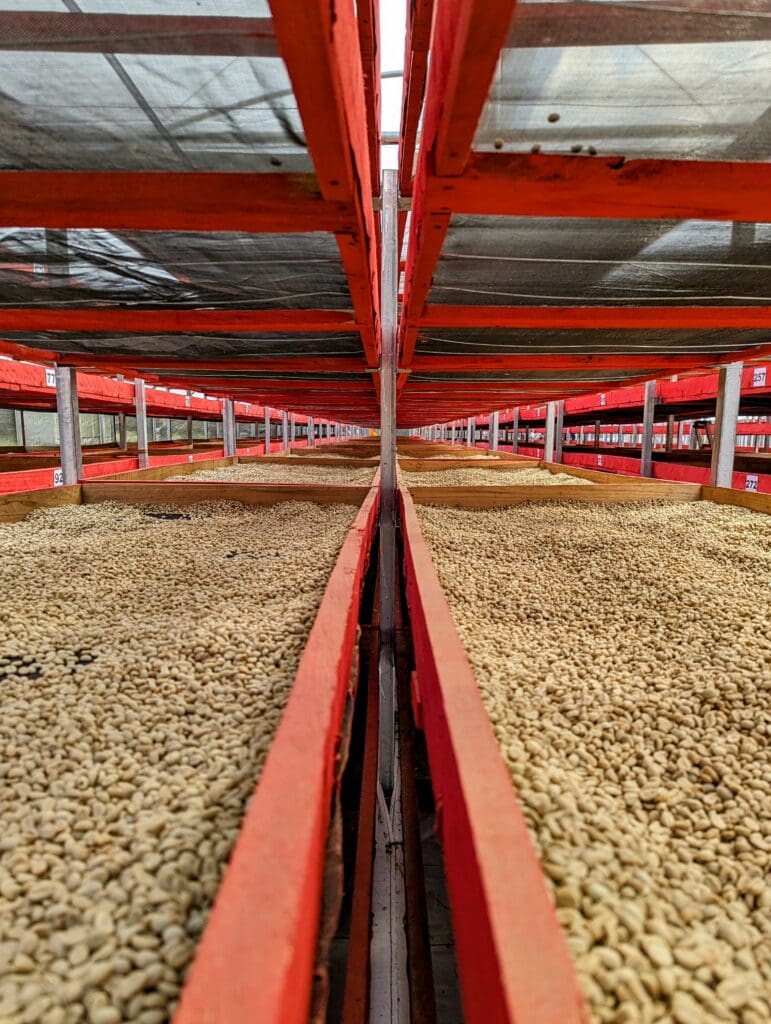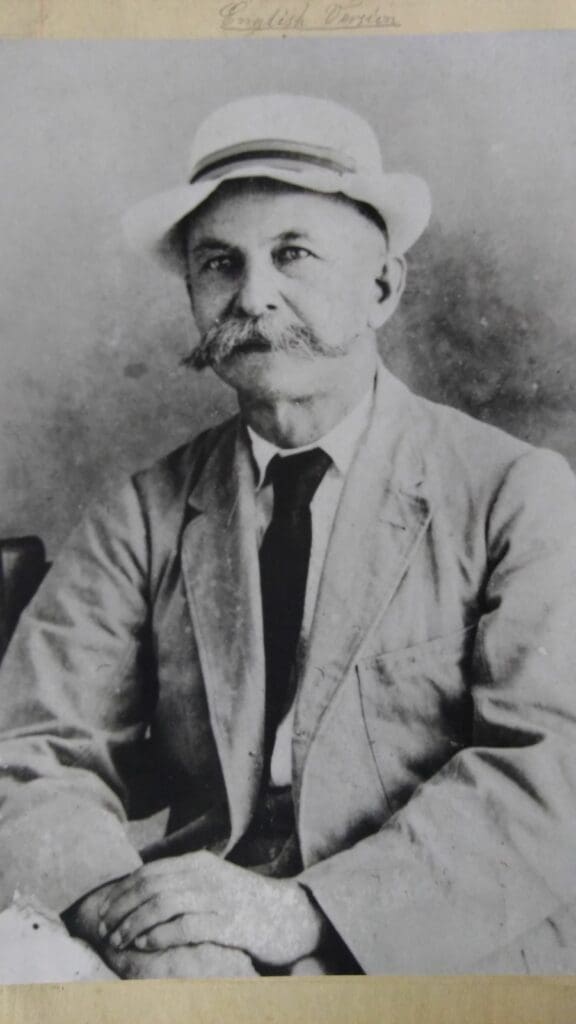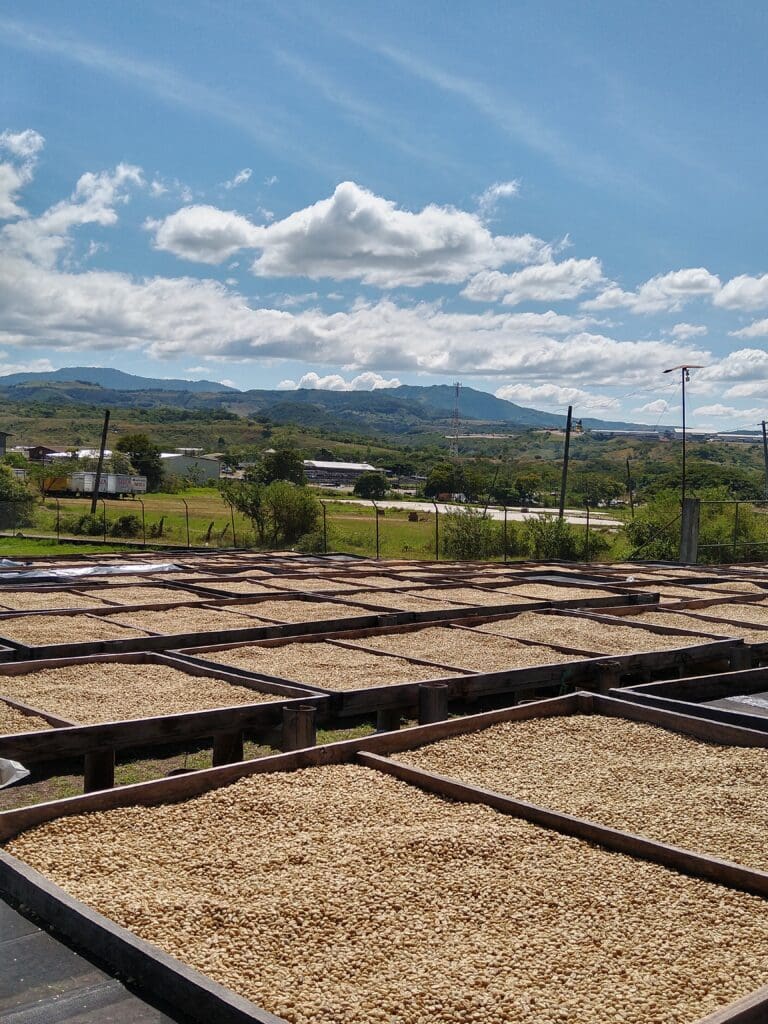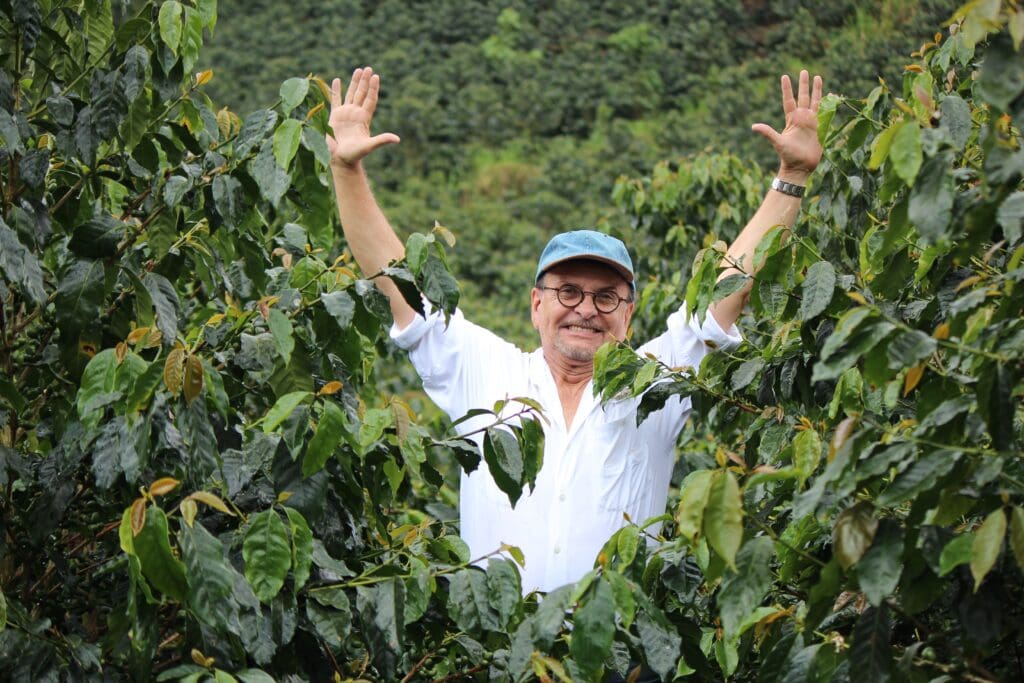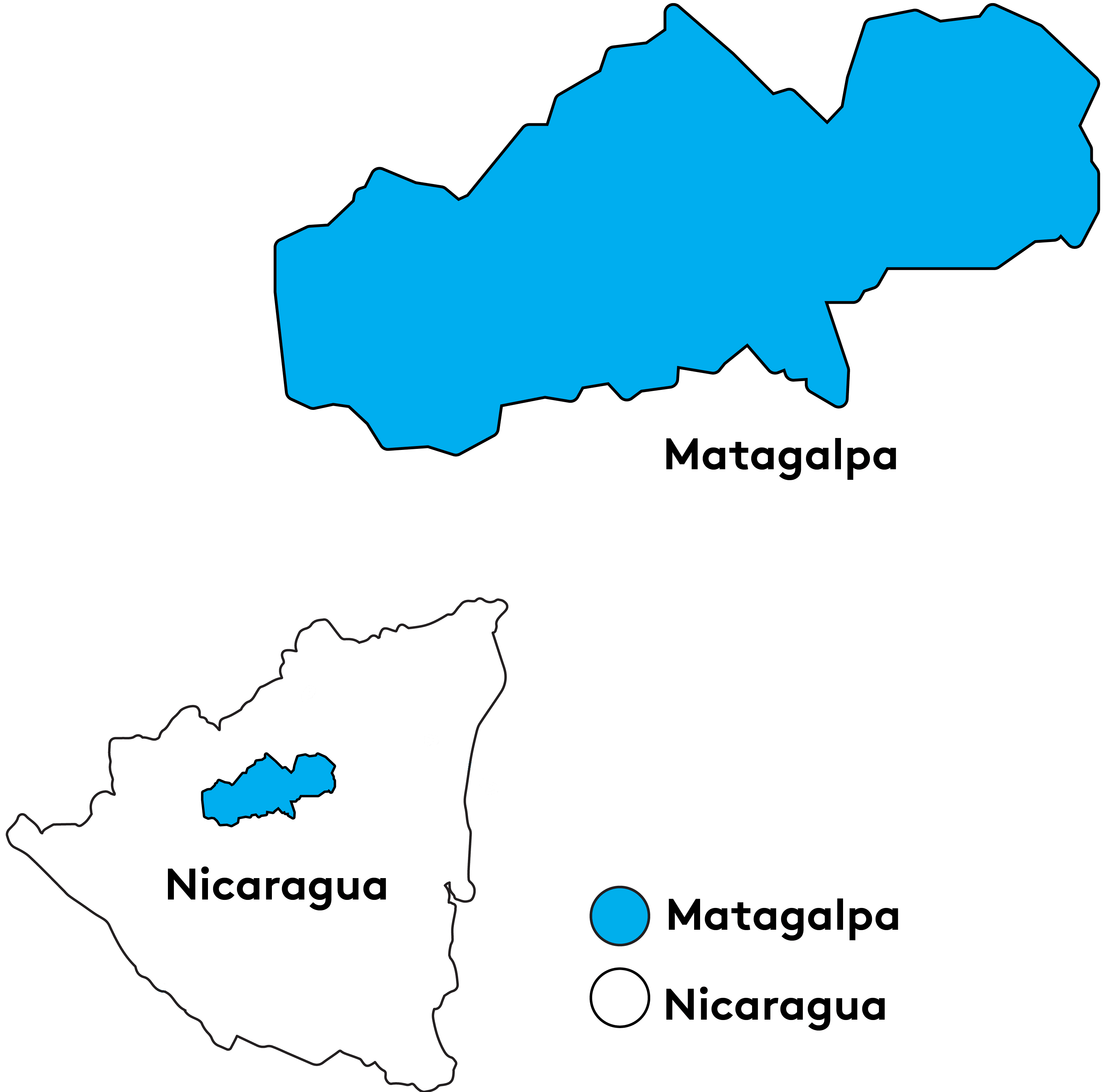El Suspiro belongs to Alejandro Saldaña and his wife, Maria Ligia Mierisch. Purchased in 2005, El Suspiro, which translates to “the whisper,” is in the department of Matagalpa within the Cerro Arenal Nature Reserve, close to other family farms like La Huella, Mama Mina, and Los Altos. The farm is home to many creeks, birds, butterflies, and flowers native to the area. Initially, only 7 hectares were purchased, and it was Maria Ligia’s brother, Erwin Mierisch II, who encouraged them to grow coffee due to the farm’s favorable climate and altitude. This led Fincas Mierisch to assist in the management, harvest, processing, and marketing of El Suspiro.
Alejandro, originally from El Salvador, visited many producers in his home country and was able to obtain fantastic seed stock of Orange Bourbon, the variety that would come to represent El Suspiro. The farm’s success has led to gradual expansion, now reaching 35 hectares and including other varieties such as Caturra, Red and Yellow Catuai, and Javanica. Interestingly, El Suspiro’s first harvest date typically falls on Christmas, December 25th.
The Matagalpa region was a primary settlement area for German immigrants in Nicaragua, many of whom, including the Mierisch family, became involved in coffee production. The family’s great-great grandfather, Bruno Mierisch, arrived in the late 1800s to help build the national railroad. When the government couldn’t pay him, he was given land instead. His first farm, Las Lajas in Matagalpa, began coffee production around 1908 due to government incentives promoting coffee cultivation.
This lot was processed as washed. It begins at the farm by selecting only optimally ripe cherries. These cherries are floated and carefully depulped using minimal water. After depulping, the beans are dry fermented in tiled tanks for 36 hours, a method chosen for water conservation and faster mucilage removal. Post-fermentation, the parchment is washed with clean water and transported to the mill.
At Don Esteban dry mill, they avoid drying on concrete patios. Instead, a thick layer of parchment is placed on the ground, covered with a black polymeric net that allows air to circulate, ensuring an even dryness. The coffee dries on these tarps for two days under full sunlight to prevent over-fermentation or mold growth. It is then transferred to raised beds with 75% shade for an additional 13 days until it reaches a humidity level of 12% or below. The total drying time for this lot is 15 days. Once dried, the beans are moved to a warehouse to stabilize as dried parchment, allowing humidity to homogenize and extending the beans’ shelf life by keeping the embryo alive as long as possible.
